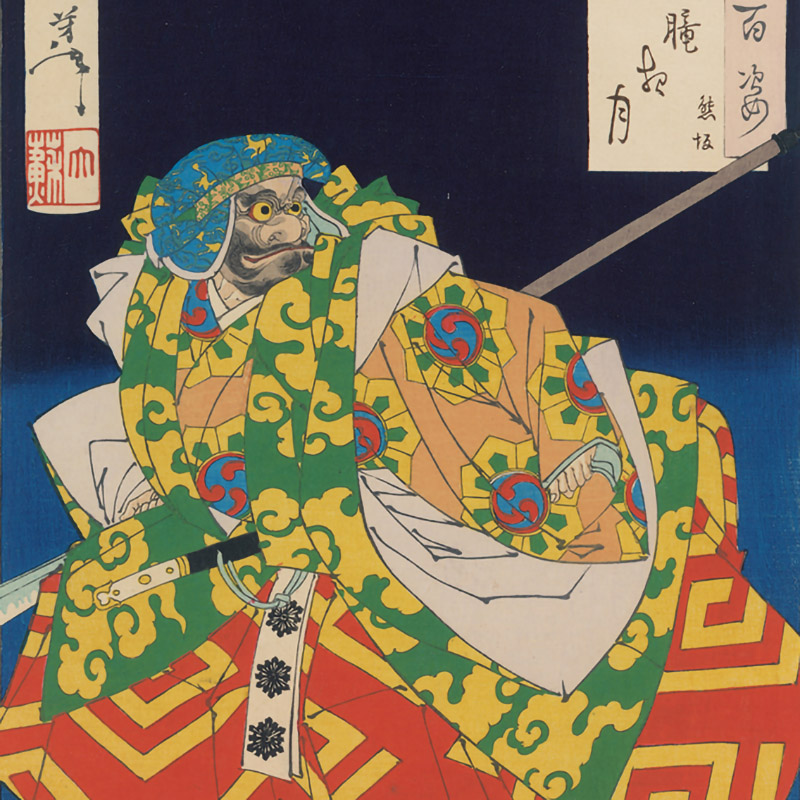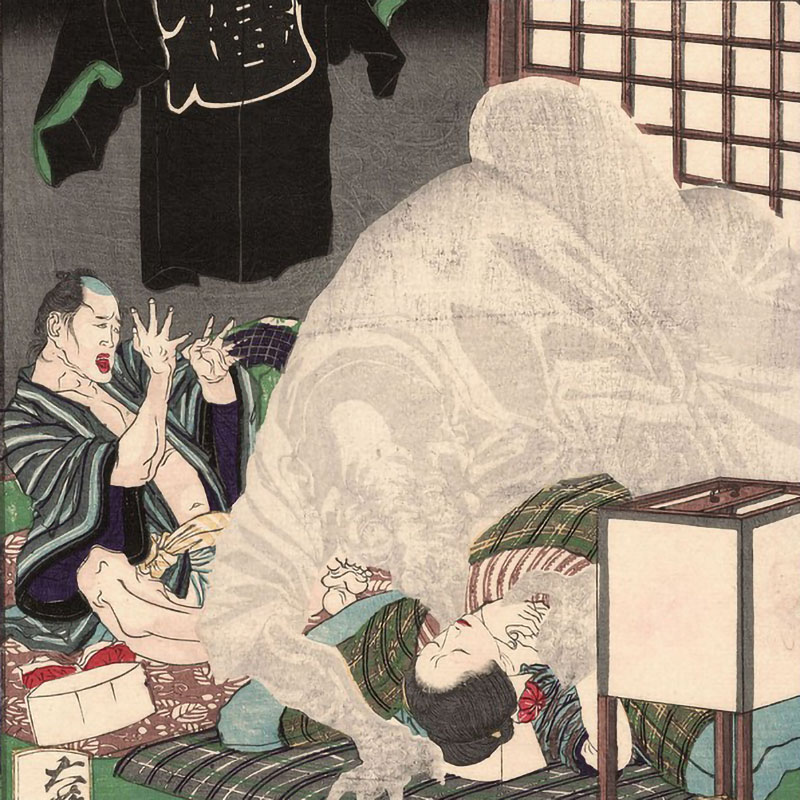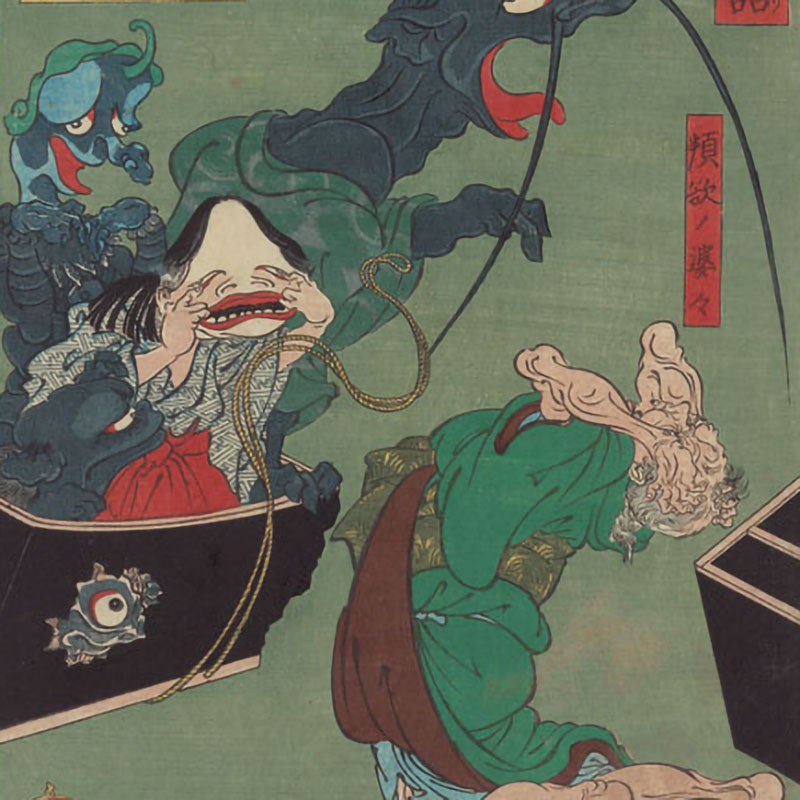Tsukiyoka Yoshitoshi
Edo 1839 – Tokyo 1892
while retrievies her arm
1889
Vertical ōban, 357 x 235 mm
Signed: Yoshitoshi, and red artist’s seal Yoshitoshi
Publisher: Sasaki Toyokichi
Series: New Forms of 36 Strange Things
Shinkei sanjurokkaisen
Fine impression and colour.
The print depicts the demon Ibaraki that flies away after retrieving his arm from the warrior Watanabe no Tsuna (953–1025), a retainer of Morimoto no Yorimitsu.
Reference:
John Stevenson, Yoshitoshi’s Strange Tales, Leiden 2016; no. 6, p. 94, illustrated in colors p. 95.
Another fine impression of the print is at the Harvard Art Museums (1985.4)
Information on the master
Yoshitoshi was one of the last great masters, and one of the great innovative and creative geniuses of the Japanese woodblock print. At the age of eleven, he was enrolled as a student of the school of Kuniyoshi. His early work is full of extremely graphic violence and death, perhaps mirroring the lawlessness and violence of Japan around him, which was simultaneously going through the breakdown of the feudal system imposed by the Tokugawa shoguns, as well as the impact of the West. By 1871, Yoshitoshi became severely depressed. Unable to work, he hardly produced any prints for two years. In 1873 he recovered from his depression and changed his name to Taiso, which means great resurrection. In 1882 he was employed by a newspaper. This gave him a steady income and marked the end of years of poverty. His last years were among his most productive, not only in terms of quantity, but also in terms of artistic quality. In 1885 the first designs of One Hundred Aspects of the Moon were published. This series was extremely popular. In 1888 the series 32 Aspects of Customs and Manners was published, a series of women's prints. In 1889 a new series with ghost subjects came on the market: New Form of 36 Ghosts. The symptoms of mental illness became more and more frequent. Nevertheless Yoshitoshi continued to work. He died in 1892 from a cerebral hemorrhage at the age of 53.
Other works of the master
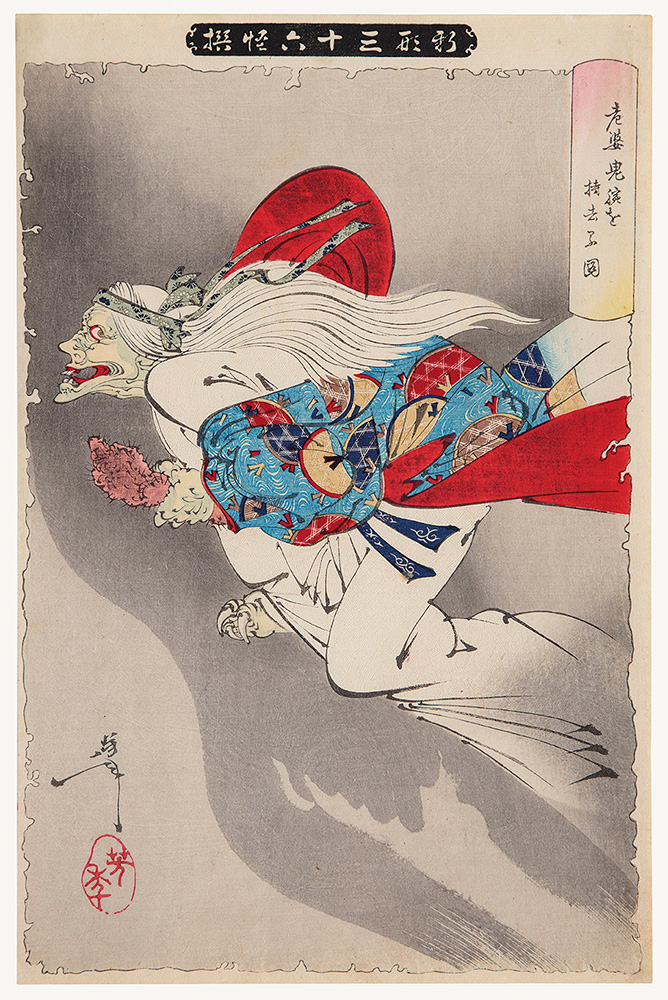
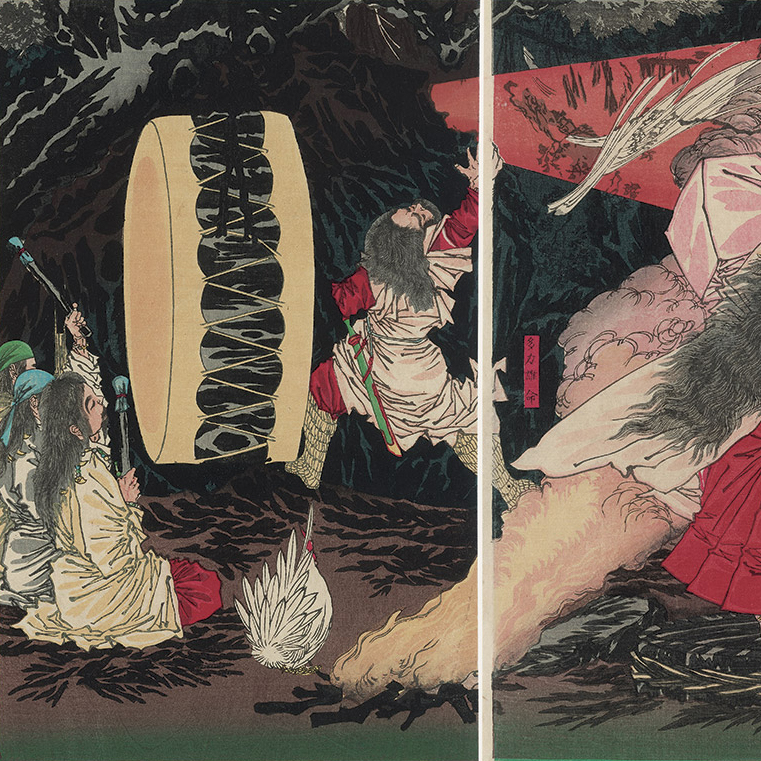
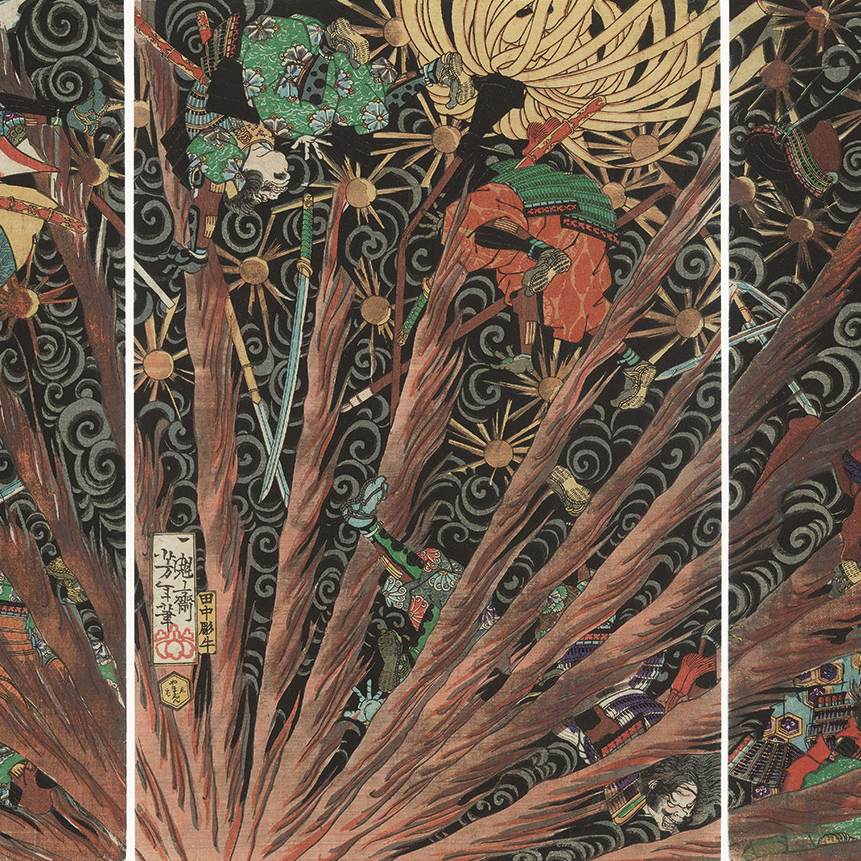
.jpg)
